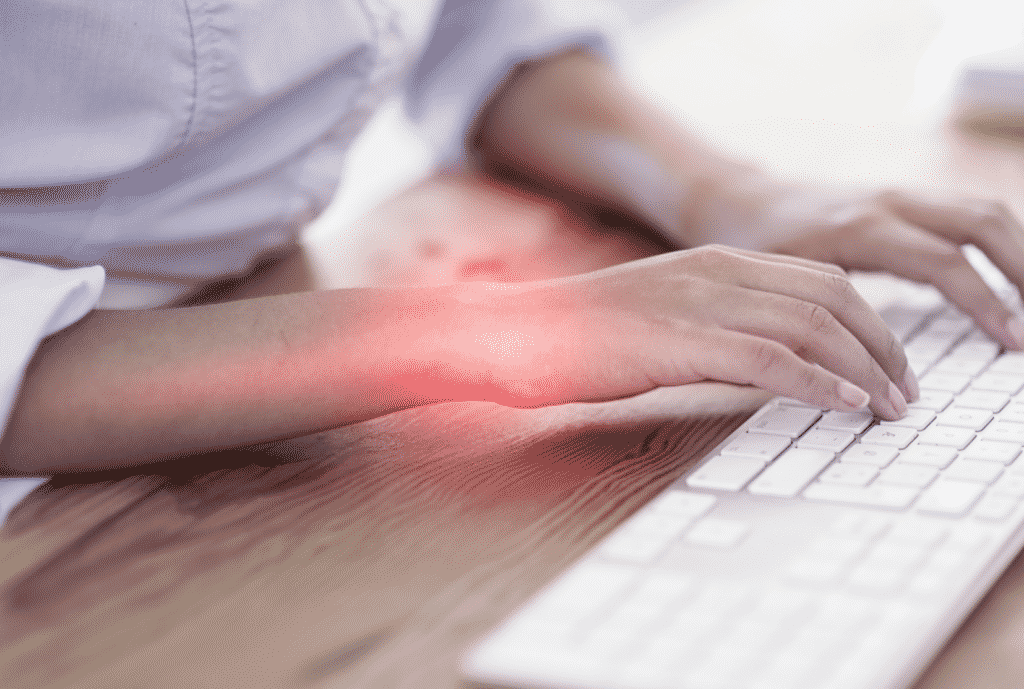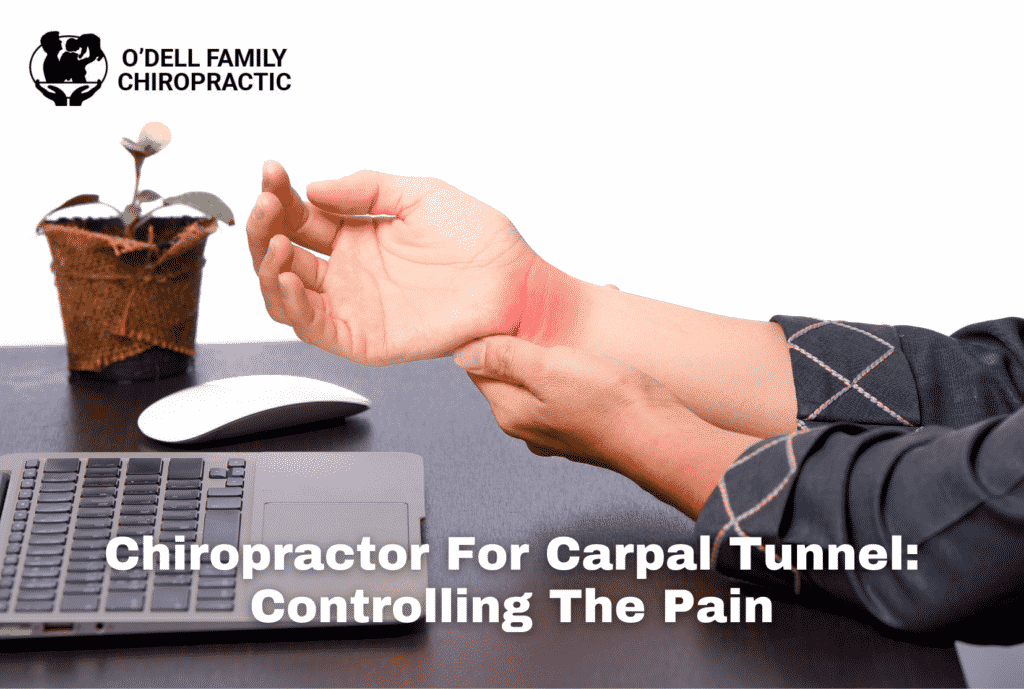Carpal tunnel is a condition that often results in tingling and numbness of the fingers, especially the thumb and index finger. It occurs when there is pressure on the nerve that runs through your wrist and into your arm. It may also result in pain moving down your arms to both hands. It can be very painful and cause problems with hand function.
It’s the most common nerve entrapment syndrome that causes pain, weakness, or numbness in your hand or fingers caused by repetitive wrist motion over time. It’s known as “compression neuropathy” because it’s usually triggered by pressure on your median nerve.
Pressure is caused by swelling of the flexor tendons, which can develop from repetitive wrist motion or other conditions that cause inflammation in your joints.
There’s also a bony growth at the base of your palm where the median nerve runs. This is called an “accessory bone.” When this accessory bone gets too close to the nerve, it can add to pressure on your median nerve.
The median nerve is the longest and widest nerve in the human body, running from the shoulder to wrist on both sides of the body. It carries signals from the brain to different parts of the hands and forearms, including giving the feeling to much of your palm, thumb, index finger, middle finger, and half of your ring finger.
This may cause a form of numbness called “phantom pain,” in which you feel like your fingers are still moving after they’re immobilized. The most common type is repetitive strain injury because of the prolonged wrist motion.
Such job-related activities include typing and playing a musical instrument. It is a medical condition that involves the compression of the median nerve as it travels from the forearm into the hand. It is most commonly caused by swelling in or around the wrist.
Signs, Causes, And Symptoms:
Symptoms usually develop gradually over hours or days. Symptoms can occur on either side of the body but most commonly affect the left hand, as it has a longer median nerve that travels a more complex path across the wrist under a ligament on this side.
Pain or tingling that starts in your wrist and spreads to your fingers (usually just on one side of the body). These symptoms may start at night and wake you up because they’re more noticeable when you aren’t using your hands. Other symptoms include:
• Tingling in the thumb, index, middle, and/or ring fingers (early numbness may go unnoticed)
• Hand weakness or clumsiness that gradually worsens to the point where you can’t do everyday tasks like buttoning your shirt or holding a coffee cup
• Pain spreading from your hand up your arm, which a doctor can reproduce by pressing on the median nerve
• Pins-and-needles sensations in your finger and thumb that come and go every few seconds or minutes
• Numbness that keeps you from being able to sense hot and cold temperatures
Possible Causes:

• Repetitive wrist activity. This is the most common cause, especially when it’s not relieved by rest or your hand and forearm muscles are already in a weakened state due to another condition. For example, if you frequently type on a keyboard without using standard ergonomics (resting your wrists on support while typing) or use vibrating equipment.
• Injury caused by a direct blow to the elbow, wrist, or arm. This may happen if you fall on an outstretched hand or while playing sports or participating in activities that involve a lot of throwing motions (like volleyball and baseball).
• Medical conditions, such as diabetes and rheumatoid arthritis, can damage the median nerve over time.
. Other conditions that can affect the nerve are repetitive stress injuries, an overactive thyroid gland, and amyloidosis (a buildup of protein).
• Excessive pressure placed on the wrist by a cast, tight splint, or another brace.
• A direct injury that causes a person to fall or hit his or her wrist.
• Some people have a smaller opening, which may make it more likely for the median nerve to get compressed. This is called “carpal tunnel syndrome” and affects half of all women instead of only 10% of men.
• Menopause may also cause this syndrome because of the falling estrogen levels, which can affect your nerves.
If you have these symptoms for more than a few days, it’s important to see Dr. Norman O’Dell at O’Dell Family Chiropractic in Webster, NY., right away so We can rule out other conditions. If it is carpal tunnel syndrome, an early diagnosis, and treatment may be needed.
Treatment And Management:
The first step is to lose the pain and tingling that comes with the syndrome. Treatment can include medications, rest, avoiding activities that exacerbate symptoms, physical therapy, and in severe cases surgery to release the pressure on your median nerve.
If you have mild or intermittent symptoms, we might suggest non-surgical treatments. Ask us about any side effects that certain medications may have before taking them. Some of these include:
• Prescription nonsteroidal anti-inflammatory drugs (NSAIDs), like ibuprofen
• Tricyclic antidepressants, like amitriptyline
• Topical anesthetic creams, sprays, or patches applied directly to the skin
• Lidocaine shots given in your doctor’s office
• Corticosteroid injections. These are effective at reducing inflammation that causes pressure on the median nerve. They can be given as a shot into affected tissue or the wrists using ultrasound or x-ray guidance. The shots must be repeated every few months because the effects of corticosteroids tend to wear off.
• Symptomatic therapy with braces, splints, nonsteroidal anti-inflammatory drugs (NSAIDs), and physical therapy
• Surgery can help treat the syndrome when other treatments haven’t worked. It involves cutting the transverse carpal ligament to relieve pressure on the median nerve.
Chiropractic Care:

Chiropractor for carpal tunnel offers a hands-on approach to treatment that works by using corrective adjustments and providing neuromuscular re-education.
We use several natural treatments to improve our patient’s overall health.
We may correct the misalignments throughout your spine that are causing pressure on nerves and pinching in your wrists.
Considering that a chiropractor for carpal tunnel can help strengthen muscles in your hand, wrist, arm, and shoulder girdle, it’s easy to think of how effective this treatment might be.
We can identify misalignment in the bones of your spine that will cause general pressure on the nerve. In other words, chiropractic care can help alleviate pain and restore function by removing misalignment in your bones.
What’s more, is that if you’re looking for relief from chronic pain without medication—which may only be a temporary solution—chiropractic care can help you naturally relax and soothe your overworked muscles.
You may be wondering if chiropractors treat carpal tunnel syndrome? The answer is yes! We treat the syndrome by helping to get pain relief, stress reduction, and reduced inflammation in the area of your wrist where your median nerve is.
If you’re experiencing this condition, a chiropractor for carpal tunnel is the solution. We use a hands-on method to restore an optimum range of motion and flexibility to your joints with therapeutic exercises or stretches.
We may also reduce pressure on your median nerve by addressing misalignment in the bones of your spine—which can help alleviate pain and restore function—and by removing pressure on your nerve through adjustments.
Chiropractic care can relieve symptoms such as:
• Numbness and tingling, especially at night
• Aching or burning pain in the median nerve area (in the wrist)
• Discomfort when wearing a wrist brace or splint
• Weakness in your hand, especially during activity
• Loss of grip strength
If you’re experiencing symptoms, it’s an easy decision to make that chiropractic care can help.
As with any chronic pain, chiropractic care may be hard to initially accept.
But after considering your options—surgery or medication that can have serious side effects—chiropractic care might be the best way to address the syndrome without unnecessary surgical procedures.
Additionally, chiropractic care can help you avoid surgery while still experiencing a full recovery from your symptoms.
We know that this syndrome is a real problem. It’s often the result of pinching a nerve in the wrist, which leads to swelling and other symptoms—symptoms that can affect everything from your sleep to your work efficiency.
If you’re looking to relieve your pain naturally, contact Dr. Norman O’Dell today. The sooner you do, the less time you’ll spend suffering from this condition.
We are not only experts in the spine, but many know about muscles and joints too.
We may also recommend you take certain vitamins or supplements and recommend a healthier diet.
We will work with you to ensure that your body gets what it needs to heal itself naturally!
When choosing a chiropractor, make sure you choose someone who is certified and has received additional training.
It’s also important to understand if your chiropractor is open to any other techniques that may help with your syndrome.
This includes other forms of pain relief like acupuncture, or ways to keep your joints moving and strong.
There are many benefits to seeing a chiropractor regularly. Not only can you achieve improved health but also improved posture and strength!
Even if you’re not currently experiencing symptoms, it’s still important to visit your chiropractor regularly so that any issues can be detected at their earliest possible stage.
We can also help you with any chronic back pain, headaches, or other symptoms you may have.
Contact us at O’Dell Family Chiropractic in Webster, NY., today for more information on how to get your symptoms under control!
Conclusion:
If you’ve been experiencing any symptoms, or if your job requires a lot of typing on the computer and is causing pain in your wrists and hands, it may be time to visit Dr. Norman O’Dell.
We will help relieve some of this discomfort by adjusting the nerve that runs through the wrist and hand area. A Chiropractor for carpal tunnel will also improve blood flow throughout these areas which can reduce swelling while stimulating healing cells to release growth factors needed for tissue repair.
Click here to learn more about our services at O’Dell Family Chiropractic. We look forward to hearing from you!



